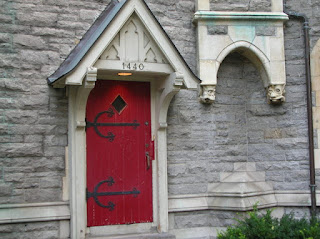I remember the first time I saw Robert Mapplethorpe's photo of Patti Smith and was in complete awe. I wondered how could anyone capture such an intimate moment? In the photography world there are two people that I hold in the highest esteem: Mapplethorpe and Annie Liebowitz. Throughout the years I have long tried to hone my skills in capturing faces. With everything in life, it will always be a work in progress. Below is a collection of some of my favorites.
Photog Manifesto
Thursday, January 19, 2012
Monday, January 9, 2012
Wabi-Sabi
Pared down to its barest essence, wabi-sabi is the
Japanese art of finding beauty in imperfection and profundity in nature, of
accepting the natural cycle of growth, decay, and death. It's simple, slow, and
uncluttered-and it reveres authenticity above all. It reminds us that we are all but transient beings on
this planet-that our bodies as well as the material world around us are in the
process of returning to the dust from which we came. Wabi-sabi is underplayed and modest, the kind of
quiet, undeclared beauty that waits patiently to be discovered.
For someone that has O.C.D., and is constant need of order, the concept of wabi-sabi is a continual work in progress. The following images are ones that I have taken over the years that i find beautiful because of their imperfect state:
Saturday, December 31, 2011
The Built Environment
When I was a kid there were three possible things I aspired to be: a travel journalist, a chef, or an architect. While none of the three came to fruition, I still live out all of them in some aspect of my life. To this day I am mesmerized by the built environment. Frank Gehry once said, "Architecture
is a small piece of this human equation, but for those of us who practice it,
we believe in its potential to make a difference, to enlighten and to enrich the
human experience, to penetrate the barriers of misunderstanding and provide a
beautiful context for life's drama." Buildings, whether they be in their beautiful glory, or in a sad, dilapidated state, evoke emotions in me that penetrate my core. Here are some photos I have taken of buildings or skylines over the last couple of years:
Beacon St. Boston.
North Church. NYC.
University of Iowa. Iowa City.
East Village (?). NYC
Trinity Church. Boston.
NYC.
First Church of Christian Science. Boston.
Random St. Montreal.
Boston.
Beacon St. Boston.
North Church. NYC.
University of Iowa. Iowa City.
East Village (?). NYC
Trinity Church. Boston.
NYC.
First Church of Christian Science. Boston.
Random St. Montreal.
Boston.
Thursday, December 29, 2011
Red Doors
For as long as I can remember I've been intrigued by red doors. In Feng Shui, a red door symbolizes the mouth of the home. It is the entry point in which abundance and opportunities find their source. In the time of the Underground Railroad, homes with red doors were considered "safe houses." Or in the case of Albert Einstein, he simply painted his door red because he couldn't recognize his house without it. The following pictures were taken over the last few years during my travels.
Finding Art in the Mundane
How does one transform the mundane? To borrow from Joan Miró: "A big stone on a deserted beach is a motionless thing, but it sets loose great movements in my mind." Objects impel imaginative use- a discarded wrapper, a junked car in a ravine, a decaying building. They all appear to be forgotten ugly items. But the true beauty lies in the story each tells.
Wednesday, December 28, 2011
As a hopeless lover of maps, creative cartography and, especially, maps as art, I was utterly enchanted by the work of mixed-media visual artist Ingrid Dabringer, who uses acrylic paint to draw — or, more precisely, find — extraordinary, playful characters and vignettes in ordinary maps. Here is a piece she did using a subway map of NYC:
Subscribe to:
Comments (Atom)


















